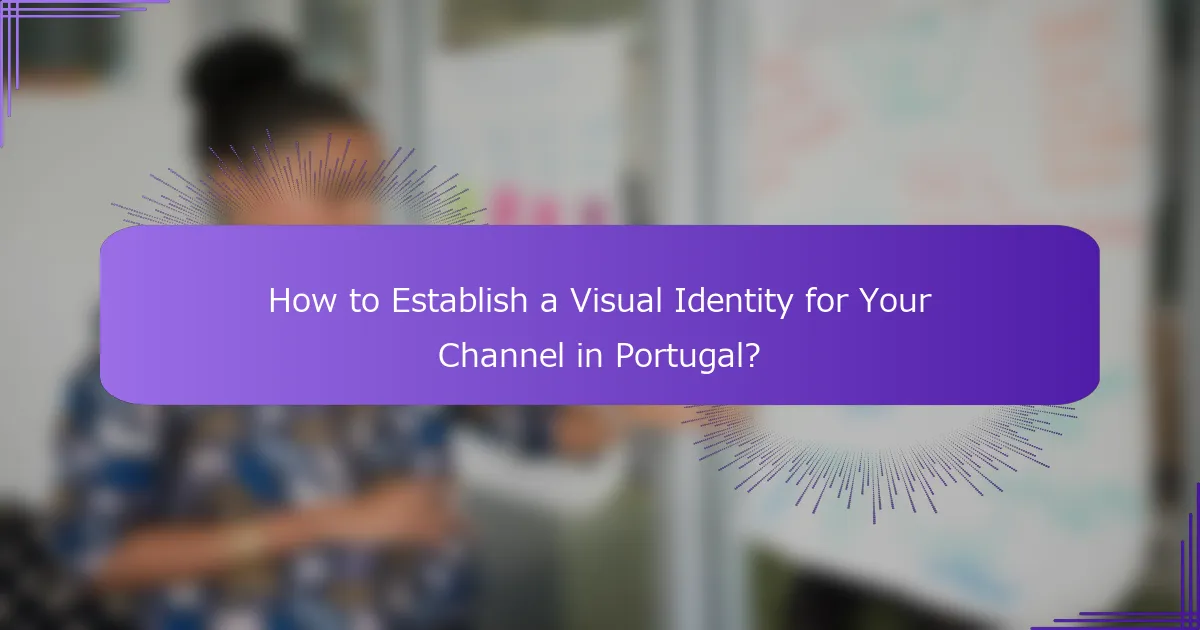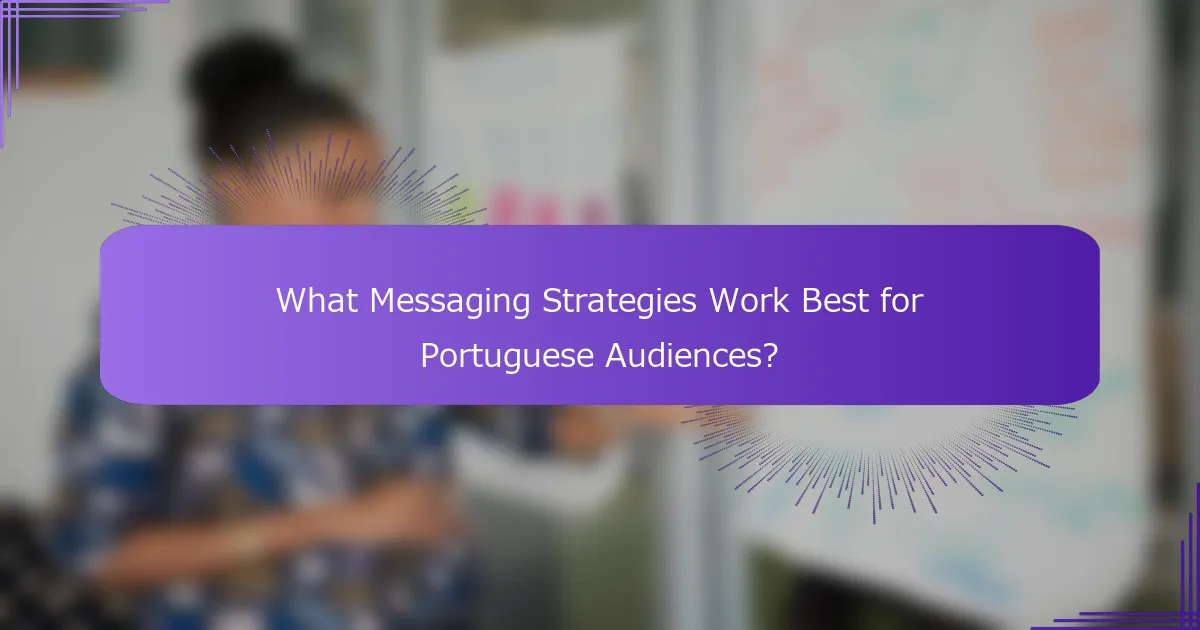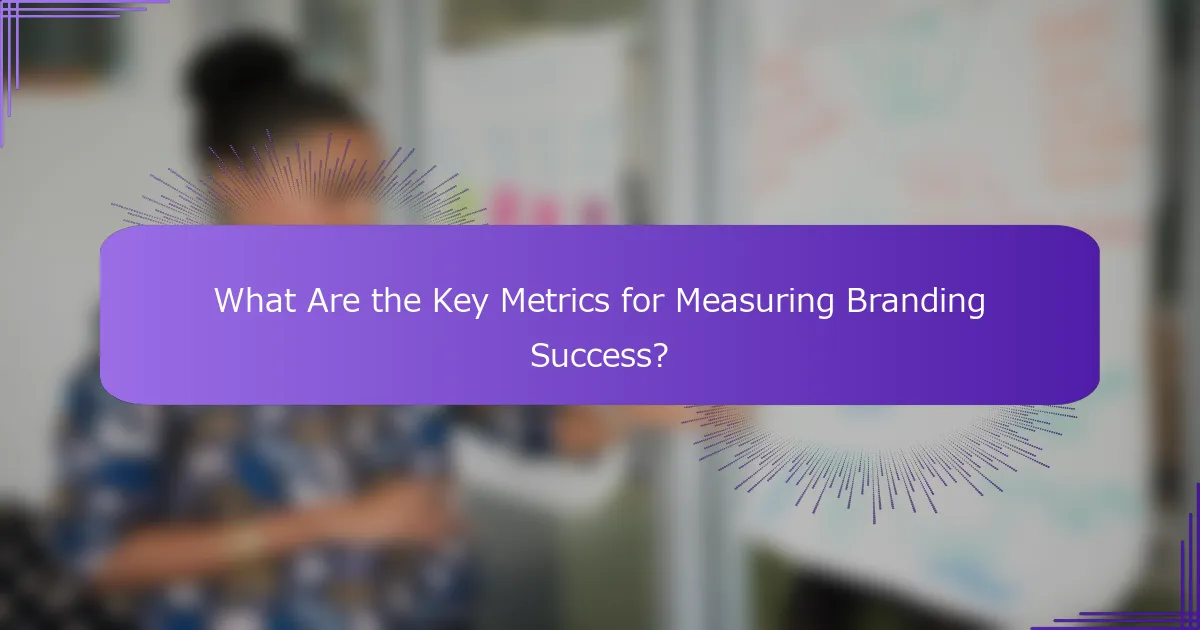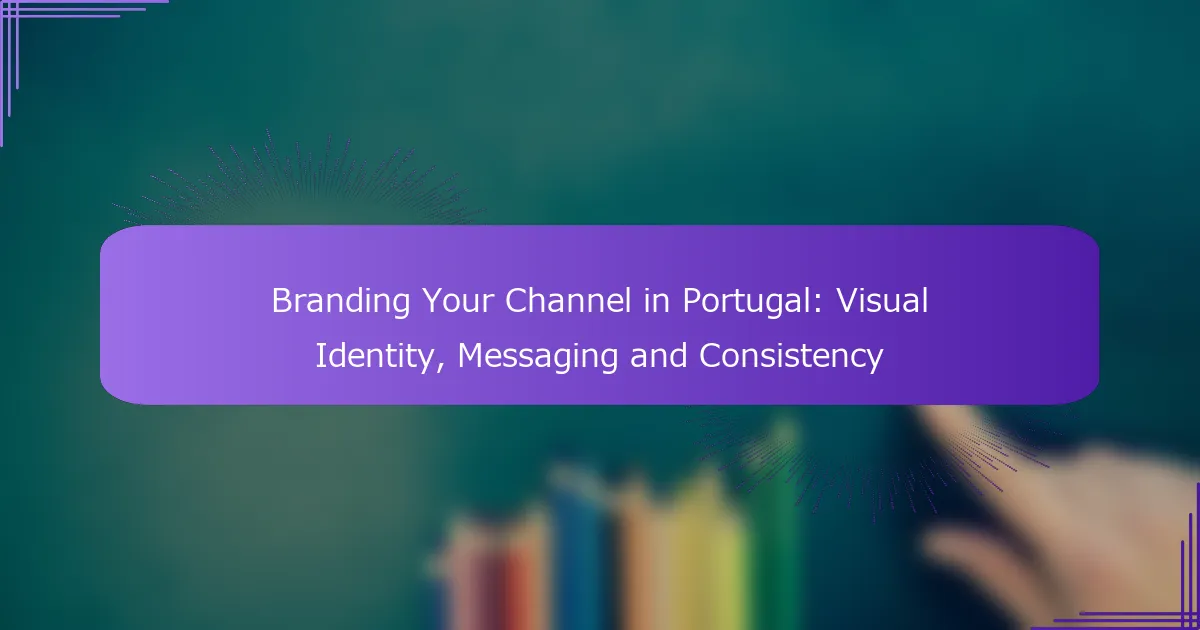Branding your channel in Portugal requires a thoughtful approach to visual identity, messaging, and consistency. By creating a cohesive look that resonates with local audiences and emphasizing authenticity in your communication, you can foster a strong emotional connection. Maintaining a unified brand identity across all platforms is essential for building recognition and loyalty among your viewers.

How to Establish a Visual Identity for Your Channel in Portugal?
Establishing a visual identity for your channel in Portugal involves creating a cohesive look that reflects your brand’s personality and resonates with your audience. This includes designing a logo, selecting a color palette, choosing typography, and utilizing imagery that aligns with your messaging.
Logo Design Principles
A logo is the cornerstone of your visual identity, serving as a recognizable symbol for your channel. Focus on simplicity and relevance; a good logo should be easily identifiable and convey the essence of your brand. Consider creating variations for different uses, such as social media profiles and merchandise.
When designing your logo, ensure it is scalable and looks good in both color and black-and-white formats. Test your logo across various platforms to confirm it maintains its integrity in different sizes and contexts.
Color Palette Selection
Your color palette sets the mood and tone of your channel, influencing how viewers perceive your brand. Aim for a limited palette of 3 to 5 colors that complement each other and reflect your brand’s personality. Consider cultural associations with colors in Portugal, such as blue for trust and red for passion.
Use tools like Adobe Color or Coolors to experiment with color combinations. Ensure that your chosen colors are accessible and maintain contrast for readability, especially for text and graphics.
Typography Choices
Typography plays a crucial role in your visual identity, impacting readability and brand perception. Select 1 to 2 primary typefaces that are versatile and align with your brand’s voice. For example, a modern sans-serif may convey a contemporary feel, while a serif font can suggest tradition and reliability.
Ensure your typography is legible across different devices and sizes. Establish a hierarchy by varying font sizes and weights for headings, subheadings, and body text to guide viewers through your content effectively.
Imagery and Graphics
Imagery and graphics should enhance your visual identity and support your messaging. Use high-quality images that resonate with your audience and reflect your brand’s values. Consider incorporating local elements or themes that appeal to Portuguese viewers.
Maintain consistency in style and tone across all visuals, whether using photographs, illustrations, or icons. Create a library of approved images and graphics to ensure uniformity in your content.
Branding Tools for Creation
Utilize various branding tools to create and manage your visual identity effectively. Platforms like Canva and Adobe Spark offer user-friendly interfaces for designing logos, graphics, and social media posts. These tools often provide templates that can save time while ensuring professional quality.
Consider using a brand kit feature in these tools to store your logo, color palette, and typography choices in one place. This makes it easier to maintain consistency across all your branding materials and content.

What Messaging Strategies Work Best for Portuguese Audiences?
To effectively engage Portuguese audiences, messaging strategies should emphasize authenticity, cultural relevance, and emotional connection. Tailoring your communication to reflect local values and preferences can significantly enhance brand perception and loyalty.
Understanding Cultural Nuances
Portuguese culture values tradition, family, and community, which should be reflected in your messaging. Incorporating local idioms, references, and humor can resonate well with the audience. For example, using familiar cultural symbols or celebrating local holidays in your content can create a sense of belonging.
Additionally, consider the regional differences within Portugal. For instance, audiences in Lisbon may respond differently than those in Porto or the Algarve. Understanding these subtleties can help you craft messages that feel more personal and relevant.
Crafting a Unique Value Proposition
Your unique value proposition (UVP) should clearly articulate what sets your brand apart in the Portuguese market. Focus on benefits that matter most to Portuguese consumers, such as quality, sustainability, or local sourcing. For example, if your product is eco-friendly, emphasize how it contributes to environmental preservation, a growing concern in Portugal.
Be concise and straightforward in your messaging. A strong UVP should be easily understood and memorable, ideally encapsulated in a single sentence or phrase that captures your brand’s essence.
Effective Storytelling Techniques
Storytelling can be a powerful tool to connect with Portuguese audiences. Use narratives that reflect local experiences or values, making your brand relatable. For instance, sharing customer testimonials or success stories that highlight community impact can foster trust and engagement.
Incorporate visual elements that complement your stories, such as images or videos showcasing local landscapes or cultural events. This not only enhances the emotional appeal but also reinforces your brand’s connection to the Portuguese identity.

How to Ensure Consistency Across Platforms?
To ensure consistency across platforms, maintain a unified brand identity through cohesive visual elements and messaging. This involves developing clear brand guidelines, ensuring visual cohesion, and planning content effectively across all channels.
Brand Guidelines Development
Developing brand guidelines is crucial for maintaining consistency. These guidelines should outline your brand’s voice, tone, color palette, typography, and logo usage. Make sure to document these elements clearly to serve as a reference for anyone creating content for your brand.
Consider including examples of do’s and don’ts for each element to avoid misrepresentation. For instance, specify how to use your logo on different backgrounds or the correct color combinations that reflect your brand’s identity.
Cross-Platform Visual Cohesion
Cross-platform visual cohesion ensures that your brand looks and feels the same, whether on social media, your website, or promotional materials. Use the same color schemes, fonts, and imagery styles across all platforms to create a seamless experience for your audience.
Tools like Canva or Adobe Spark can help maintain visual consistency by allowing you to create templates that adhere to your brand guidelines. Regularly review your content across platforms to ensure alignment and make adjustments as necessary.
Content Scheduling and Planning
Effective content scheduling and planning are essential for consistent messaging. Create a content calendar that outlines what to post, when, and on which platforms. This helps ensure that your messaging is synchronized and reinforces your brand identity.
Utilize scheduling tools like Hootsuite or Buffer to automate posts and maintain a steady flow of content. Regularly analyze engagement metrics to refine your strategy and ensure your content resonates with your audience across all platforms.

What Are the Key Metrics for Measuring Branding Success?
Key metrics for measuring branding success include engagement rates, brand recognition, and audience growth. These metrics help assess how well your brand resonates with your audience and its overall impact in the market.
Engagement Rate Analysis
Engagement rate analysis involves tracking interactions such as likes, shares, comments, and views across your content. A higher engagement rate typically indicates that your audience finds your branding appealing and relevant. Aim for engagement rates of around 1-5% for social media platforms to gauge effectiveness.
To improve engagement, consider creating content that encourages audience participation, such as polls or questions. Regularly analyze which types of posts generate the most interaction to refine your strategy.
Brand Recognition Surveys
Brand recognition surveys assess how familiar your audience is with your brand and its messaging. Conduct surveys periodically to gauge awareness and perception, focusing on aspects like logo recognition and recall of your brand’s values. A recognition rate of 30-50% is often a good benchmark for established brands.
Utilize online tools or platforms to distribute your surveys, ensuring they reach a representative sample of your target audience. Analyze the results to identify areas for improvement in your branding strategy.
Audience Growth Tracking
Audience growth tracking measures the increase in your followers or subscribers over time. This metric is crucial for understanding the effectiveness of your branding efforts in attracting new viewers. A steady growth rate of 5-10% monthly is often considered healthy.
To enhance audience growth, leverage cross-promotion on different platforms and collaborate with influencers in your niche. Monitor growth trends to identify successful campaigns and adjust your approach as needed.

What Tools Can Help with Branding Your Channel?
Branding your channel effectively in Portugal requires the right tools to create a cohesive visual identity, manage messaging, and ensure consistency across platforms. Utilizing design, scheduling, and analytics tools can streamline your branding efforts and enhance your channel’s impact.
Canva for Design
Canva is a user-friendly graphic design tool that allows you to create visually appealing graphics for your channel. With a variety of templates tailored for social media, you can easily customize designs to match your brand’s identity.
Consider using Canva for creating channel art, thumbnails, and promotional materials. Its drag-and-drop interface makes it accessible for users without design experience, enabling you to produce professional-looking visuals quickly.
Hootsuite for Scheduling
Hootsuite is a powerful social media management tool that helps you schedule posts across multiple platforms, ensuring your messaging remains consistent. By planning your content in advance, you can maintain a steady flow of communication with your audience.
Take advantage of Hootsuite’s analytics features to determine the best times to post based on audience engagement. This can help you optimize your scheduling strategy and maximize your channel’s visibility.
Google Analytics for Insights
Google Analytics provides valuable insights into your audience’s behavior, helping you refine your branding strategy. By tracking metrics such as user demographics, traffic sources, and engagement rates, you can better understand what resonates with your viewers.
Utilize these insights to adjust your content and messaging accordingly. Regularly reviewing your analytics can lead to more informed decisions, ensuring your branding efforts align with audience preferences and trends in Portugal.
